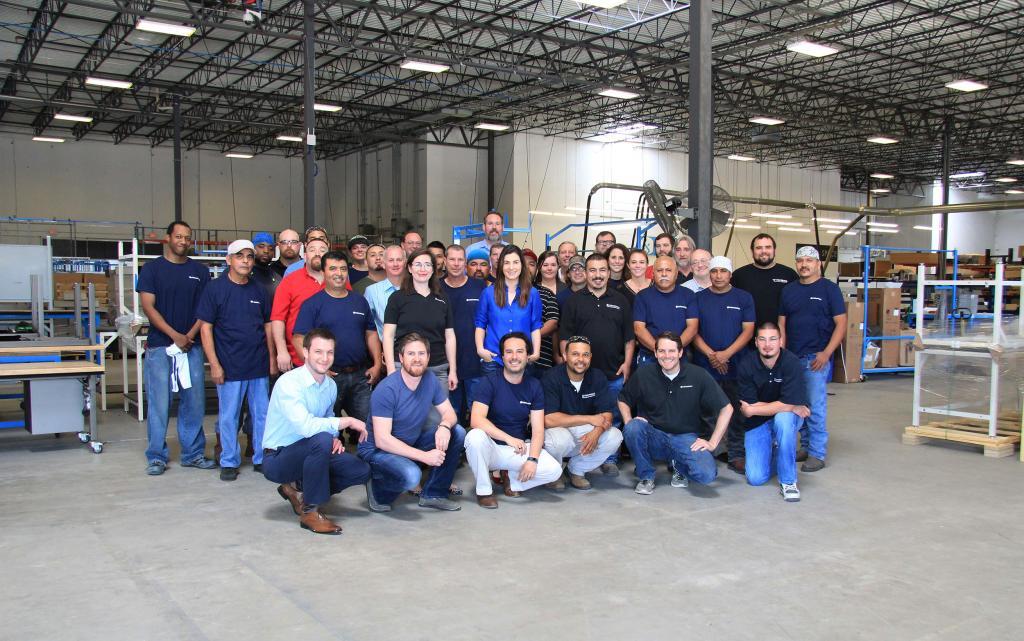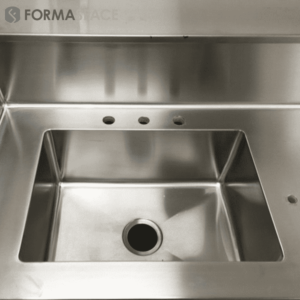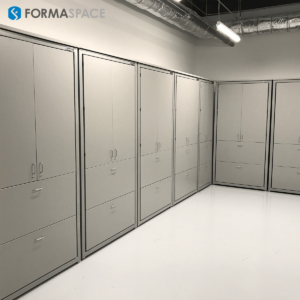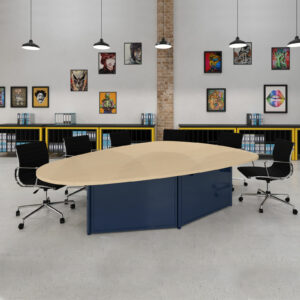If you’re trying to improve the performance of your business, you’ll want to look at ways to improve employee engagement.
Sounds reasonable, but ‘how’ to go about it is the question.
Do you put up motivational posters? Create an incentive program? Invest in sending workers to employee motivation workshops?
It turns out the answer may be closer to home.
You may not realize it, but creating the right office environment has a tremendous effect on whether your employees are healthy, happy, motivated and engaged in their work or not.
If you want to improve employee engagement, you need to understand four key aspects of the modern office which influence the performance of your employees:
- Promoting physical health and well-being for employees in their workspaces.
- Understanding the effect of critical environmental cues in the office.
- Leveraging advances in information technology to create new choices for employee workspaces.
- Using office design to influence the way employees, customers and prospects view your company.
Promoting Physical Health and Well-being for Employees in their Workspaces
According to Professor Sean Mackey MD of the Stanford University Medical Center, lower back pain affects more than 100 million Americans and results in approximately $600 billion a year in medical expenses plus countless hours off the job for treatment. And lower back pain is just part of the problem. Your employees can also run the risk of repetitive stress injuries and other associated injuries on the job. That’s why it’s so important to start with the basics and provide your employees with comfortable, ergonomically correct seating and worktables.
Make sure your employees have a comfortable, ergonomic place to work

As we all know, employees come in all shapes and sizes. This makes it even more challenging to find the right ergonomic seating arrangement for each individual.
Adjustable chairs have been an accepted part of the office design landscape for many years. Now electrically-operated tables and computer workstations that can be height adjusted at the touch of a button are becoming standard equipment in modern offices.
These so-called “Sit-to-Stand” workstations allow employees to change their seating position throughout the day, moving from a seated position to a standing position at the touch of a button.
Not only do these flexible tables and workstations make it easier to accommodate employees of different statures, they can also help significantly improve employee health. Researchers like David Alter, MD, PhD, Senior Scientist at the Toronto Rehabilitation Institute-University Health Network and Institute for Clinical Evaluative Sciences have published studies that indicate:
Staying seated for prolonged periods of time can increase the risk for heart disease, diabetes, cancer and death– regardless of whether the person exercises regularly are not. Even exercising an hour or more a day doesn’t eliminate the health risk that comes from regular prolonged sitting.
Make sure employees move during the day with sit-to-stand desks
More and more health professionals describe this phenomenon as “Sitting is the new Smoking” – in other words a sedentary lifestyle can be as bad for you as smoking cigarettes. An investment in Sit-to-Stand desk furniture can help improve your employees’ long-term health and increase their effectiveness on the job.
Understanding the Effect of Critical Environmental Cues in the Office
Natural lighting has a major effect on employee engagement and productivity.
If you are relying on artificial light, be cautious. Millions of iPhone users have become aware of the unintended effects that artificial lighting has on our physiology – such as when we try to stay awake or go to sleep. Apple’s recently introduced Night Shift feature addresses the latter, by changing the screen to a warmer color palette during the late-night hours to help promote sleep.
This illustrates the importance of natural light as a critical environmental cue. As Psychology Today reports, exposure to natural light improves workplace performance, so when you are considering how to do your office space layout try to maximize natural light streaming into the workspace.
In the movie Office Space, character Peter Gibbons (played by actor Ron Livingston) breaks the rules by disassembling his cubicle to let in natural light.
Don’t overlook other environmental cues that improve employee happiness and productivity. A recent study published by Dr. Chris Knight from Exeter University concludes that overly austere office spaces can be too Spartan for our own good.
In the 18 month project, Dr. Knight and the other psychologists determined that worker productivity increased by 15% by adding just a few houseplants to an otherwise spare office environment.
Employee performance on tests like memory retention improved when they could see a plant from their desk.
The study co-author Prof Alex Haslam, from the University of Queensland’s School of Psychology, said “Our research questions this widespread conviction that less is more. Sometimes less is just less.”
Leveraging Advances in Information Technology to Create New Choices for Employee Workspaces
Employees who primarily work with information, the so-called “knowledge workers”, have many more options for working on the go — thanks to smartphones, tablets and lightweight notebook computers connected to the Internet. As a result, fewer and fewer workers are actually sitting at their desks. According to a 2009 study by the GSA, only 30 to 40% of workers use their official assigned workspace.
Consequently, office space planners are having to come up with new flexible space solutions to accommodate a range of employees: those assigned to work in the area but who are not there all the time, visitors or contractors who are working in the office temporarily and, finally, employees coming from a different floor or different building or different campus who are visiting temporarily to collaborate on projects.
The challenge for office space planners is how to keep up with changes in technology.
Modular furniture solutions from Formaspace are part of the solution for many business settings. These can be reconfigured easily, and mix-and-match with other modular units to be recombined and reconfigured as your needs change.
Quiet Spaces and Noisy Spaces: Task-based areas are driving office space design.
Increasingly employees are looking for choices in their workspace based upon different types of tasks they perform throughout the workday.
More and more projects require collaboration, so there needs to be workspaces set aside for working together to solve problems.
Employees also want to let off a little steam at work, so office design planners are increasingly incorporating break rooms that allow workers to gather and have fun at the office.
Yet at other times of the, employees need to find a quiet space to concentrate. Here, acoustics technology used to control unwanted noise is important. Good sound insulation supplemented with white noise generators can provide your employees with a dedicated workspace for quiet, productive thinking.
Using Office Design to Influence the Way Employees, Customers, and Prospects View Your Company
As an employer, you are constantly looking for ways to engage and motivate your employees — or at least you should be.
According to a 2013 report called ‘State of the Global Workplace’ by the polling group Gallup, less than 15% of employees worldwide felt engaged in their work. And worse, disengaged employees with a negative or hostile attitude toward their employer outnumbered the engaged employees by nearly two to one.
Ouch. Those are pretty sobering statistics.
So when you walk for through your office today, you should take a look at your space with fresh eyes — consider whether the environment that you provide for your employees is sending the right message or not.
Are you sending a message that you care about your employees well-being, and that you are invested in their comfort and productivity?
Employees who enjoy coming to work and appreciate their surroundings are more likely to stay, reducing your employee turnover.
An enhanced office environment has other benefits as well: it sends a strong signal to your clients that you care about your employees and their contributing efforts for the company.
It also makes it easier to recruit higher-quality new employees as you grow.
Formaspace Wants to Help You Grow Your Business with the Right Office Environment
If you want to improve your employee engagement in the office, get in touch with our office furniture consultants at hello@formaspace.com
We can help steer you in the right direction with our line of modular furniture, Sit-to-Stand workstations, computer desks and custom furniture design offerings.









